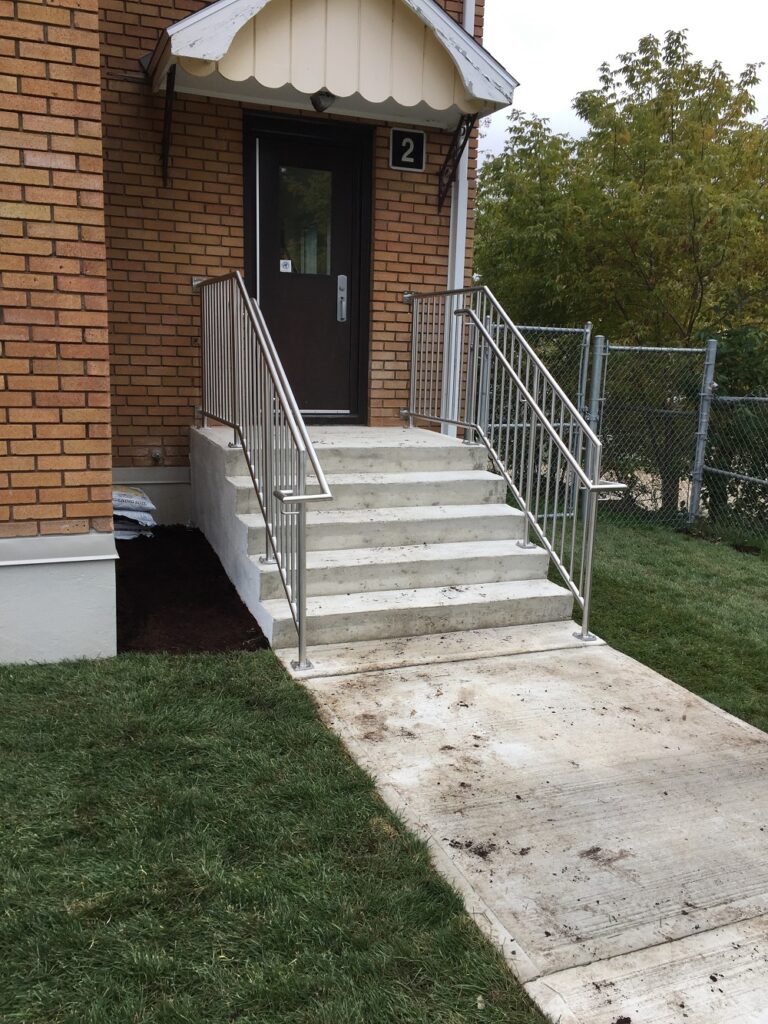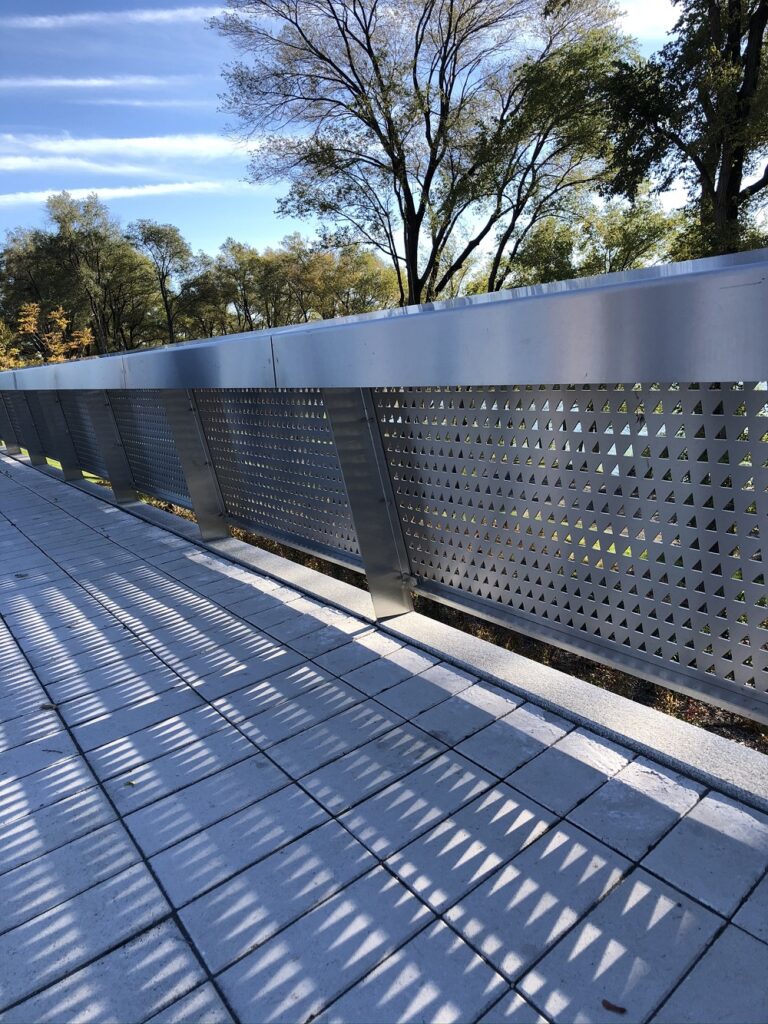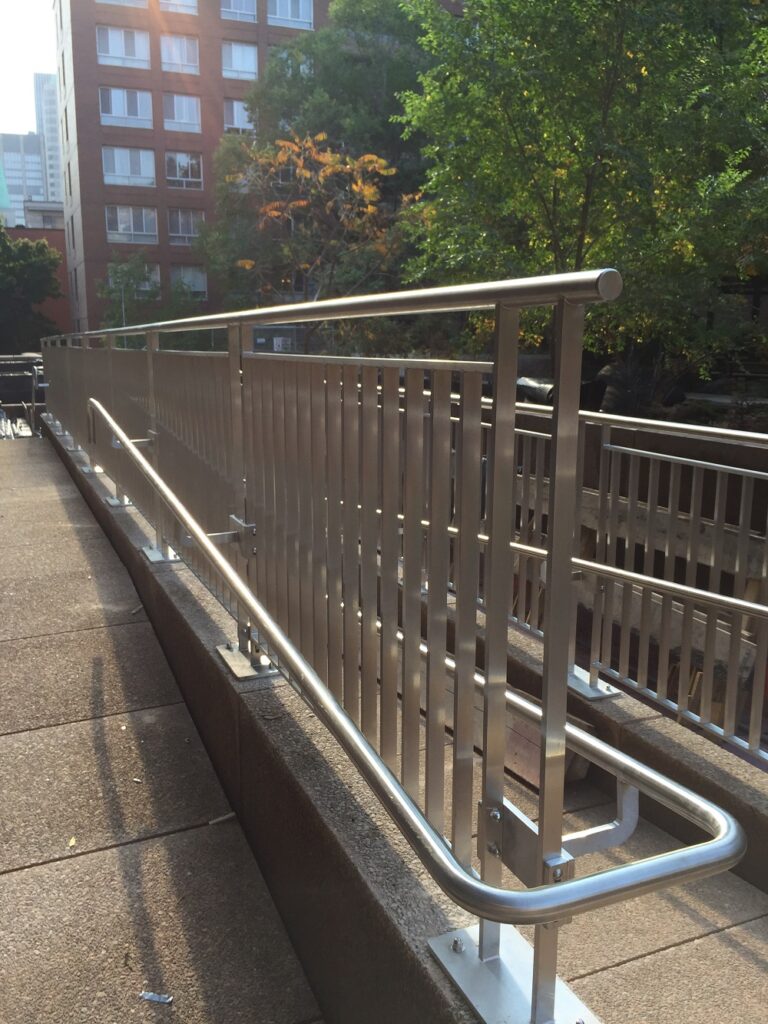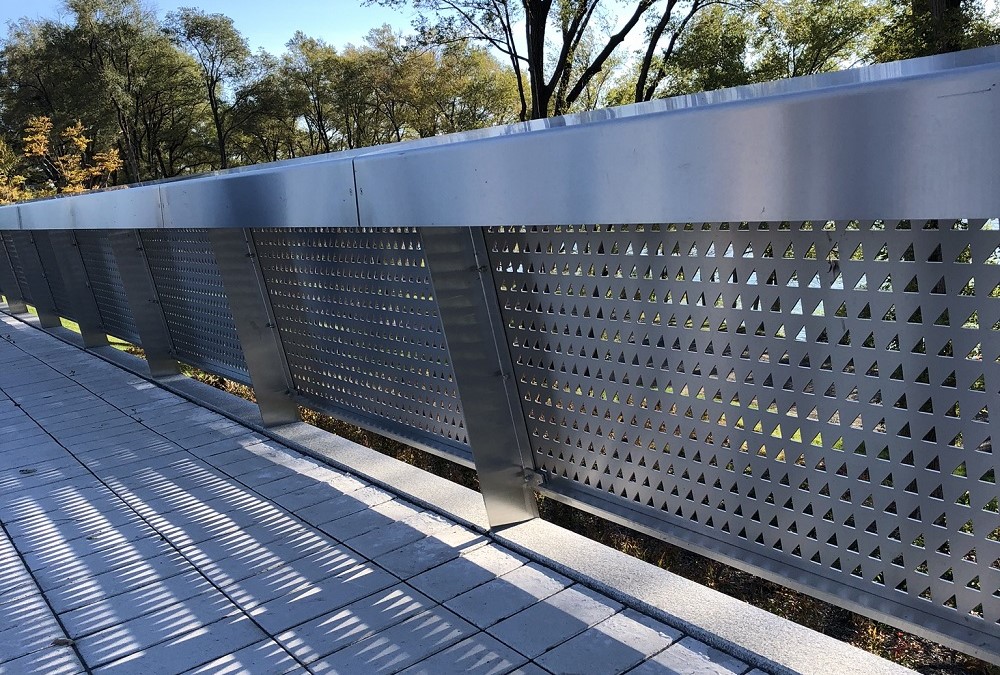Syri Stainless has been based since 1957 in the Lanaudière region of Saint-Félix-de-Valois and specializes in all stainless steel products, particularly stainless steel guardrails.
2017: Syri Stainless Steel Guardrails Make Their Debut
Syri specializes in stainless steel guardrails since around 2017. At the time, increasingly more general contractors were using Syri’s services for stainless steel guardrail installations in institutions such as schools. With this increasing demand, Syri had no choice but to hire a project manager to coordinate the various continually incoming contracts and requests. Following the project manager’s departure a few months after his arrival, Francis Carrière and Alexandre Syri took over and invested in developing the construction sector. As a result, Syri was awarded a contract in 2018 with the EBC consortium to manufacture and install all guardrails and handrails for the Pie-IX Boulevard bus stations in Montreal. One thing led to another and Syri was subsequently invited to bid on the REM project in 2019 as a result of their recent collaboration with EBC, who was also involved in the project. Syri will equip 26 metro stations with stainless steel guardrails, handrails and aesthetic finish for this mega-project, which finally began at the end of 2021. To date, Syri has completed its 6th station. Syri is also responsible for cladding walls and stairs and manufacturing and installing handrails, stainless steel guardrails and footbridges.Specialized in Stainless Steel Guardrails for Schools
Syri is recognized as the specialist in manufacturing and installing stainless steel guardrails and handrails in schools and is regularly contacted by general contractors for this purpose. As a result of this leadership position and the fact that the Quebec government is investing heavily in upgrading and renovating the province’s primary and secondary schools, Syri is always in high demand for this type of work in the spring, summer and early fall.How are Syri’s stainless steel guardrails made?
Syri’s stainless steel guardrails are installed at 42 inches high to prevent people from tipping and falling over. They also have vertically installed balusters separated every 4 inches to prevent children’s heads from fitting between the bars. Syri regularly works with 304 stainless steel, the most common and regularly used. Syri can also use 316 stainless steel under certain conditions when the product is more at risk, given its higher resistance to weathering and corrosive products. To protect the surface against weathering, oxidation, cleaning products or even minerals that could affect stainless steel, Syri proceeds with passivating its stainless steel. Syri must be extremely vigilant on construction sites because other trades may contaminate the stainless steel used for its installations. When this happens, Syri must return to the job site, wash the stainless steel with acidic soap and then rinse it with a pressure washer before buffing, passivating and, finally, watering it again 30 minutes later. All guardrails and handrails are designed as one continuous segment, i.e. they have no visible welds except for the guardrail’s balusters. Indeed, for the guardrail balusters, Syri tries as much as possible not to touch the polishing, as this increases work for its employees and costs for the client. As for the mechanical joints, they are not at all visible. Syri welds them directly on site in a continuous weld. The result is uniform and perfectly smooth segments. Finally, the handrails are 36 inches high to support people descending the stairs.Syri’s Measurement and Design of Stainless Steel Guardrails
First, the designer, project manager or installer visits the site to take the measurements of the stairs to ensure their accuracy. Indeed, the architects’ plans unfortunately do not reflect the actual measurements. To avoid unforeseen problems, Syri must wait until the very end to take the measurements once all the parts have been installed on the stairs. Syri has developed its laser technique over the years, allowing them to measure the stairs with the greatest accuracy and least risk of error. After taking the measurements, Syri designs the stairs, handrails and guardrails in 3D. This is followed by client approval and factory manufacturing.The Manufacturing of Stainless Steel Guardrails
The manufacturing of the stainless steel guardrail consists of several steps. First, there is bending, which is a process in which the pipes are bent into a uniform and perfectly round shape. Next, they must be notched, which means that one end of the pipe fits perpendicularly into another. The guardrails are assembled uniformly on a welder’s table and then welded together before being acid cleaned and undergoing passivating at the very end, if necessary. A specialized air tool is then used for the polishing step. This step is essential to ensure that all the parts are sanded to a uniform, bright and shiny finish, just like the base material received.Installation of Stainless Steel Guardrails
The stainless steel guardrail installation is a key step in the process. Syri’s employees leave the plant with all the equipment needed for the stainless steel guardrails and handrails, which have been previously loaded onto the company-labelled trucks. Once on site, Syri employees will place the stainless steel guardrails and handrails on their respective floors. They will take the opportunity to verify that the general contractor has installed solid materials behind the handrails to fasten them. Handrails can be fastened to the floor or wall. It is important to note that the handrails are always installed seamlessly from floor to floor. To do so, Syri employees weld all the joints so that the handrail extends, for example, from the first to the sixth floor. Doing so ensures that the handrail is smooth and uniform and prevents users from cutting themselves on a sharp corner. Syri employees weld and polish the handrail joints directly on-site to achieve this flawless finish.Stainless Steel Guardrail Used in the Food Industry
Syri’s experience in manufacturing guardrails did not begin in the construction industry. The company has been manufacturing stainless steel guardrails since 1957 for various clients in the food industry, whether it is to prevent employees from falling on production lines in slaughterhouses or to be installed on a mezzanine or footbridge manufactured by Syri or not. However, we note that guardrails in this industry have a variable height depending on their use and are often designed and manufactured with square or rectangular tubes instead of round. The difference in shape is mainly because it is easier to attach accessories and electrical or safety elements on flat surfaces than on round tubes. Secondly, the finish is also often different since its use is not aesthetic, and clients may prefer to pay a lower price for a matte rather than a shiny material. Finally, stainless steel guardrails are often equipped with kickplates to prevent objects and tools from falling where they are installed.




